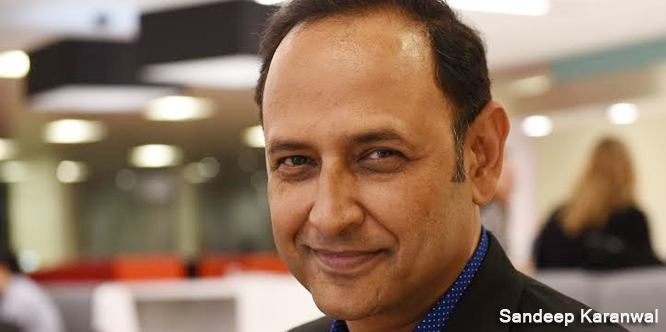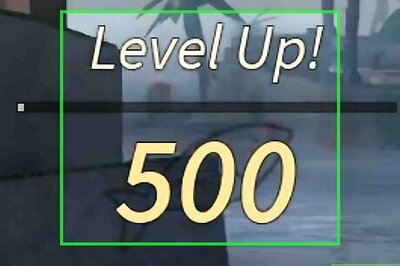
views
With call drops and the poor network connectivity hampering the growth of communication in India, telecom trade body GSMA aims to simplify the issue explaining what is actually leading to rampant dropped calls in India and what the mobile operators and the Government of India can do to address the network woes.
GSMA India director Sandeep Karanwal and Spectrum & Policy Manager Nitin Sapra in an interview with IBNLive go at length to describe how the government and mobile operators have to go hand in hand to provide better mobile services in the country.
IBNLive: What do you think is the single biggest reason behind the rampant call drops?
Sandeep Karanwal: First of all, there is no single reason. In fact, there are a couple of issues which we think are the reasons for call drops. The first that comes to mind straight away is the lack of spectrum. Because when you compare to other countries like South Africa, Australia, Malaysia, the quantum of spectrum which is available with Indian operators is actually very low. So, that is one reason.
The other reason is the stringent emission norms that the Government of India has imposed. As you would be aware, the emission norms in India are one-tenth of the international standards. So, the network infrastructure has not been able to grow in that manner.
For instance, the international limit at 900 MHz is 4.5 W/m2 and India imposes 0.45 W/m2 . (The limits vary with frequency). India adopted the international limits in 2008 and then implemented the revised limits effective from 1 September 2012.
Also, with this limitation (one-tenth of international standards of radiation), it's difficult to take off 4G in India. So if we have to get the better 4G connection, we need to either have substantially more towers (with this limitation) or the emission policy needs to be reviewed. As an example of reviewing the guidelines, the Brussels city Government in Belgium recently increased the allowable level from 3 V/m to 6 V/m to allow 4G deployments.
Nitin Sapra: We need to understand that in terms of setting up the towers, there is one more restriction. As the spectrum is directly related to the towers, so what operators have is an option to put up more towers because the spectrum available is less. So, they need to reuse the same frequency. But in cities like Delhi and Mumbai, the two towers are often as close as 150 metres (in some areas), so you can't put more towers. So, the only option now left is to increase the amount of spectrum given to the operators because operators can't reuse the same frequency as they have come so close that there is interference. And sometimes that interference can lead to call drops. Therefore, increased spectrum is the next immediate priority.
But, the good thing about all of this is that Telecom Minister Ravi Shankar Prasad has recently said that to have better coverage, we need to have more towers. And the fear in the public that emissions are actually harmful for health is actually misplaced.
IBNLive: What could be effective solutions to deal with call drops?
Sandeep: First of all, the quantum of spectrum which is available with Indian operators is very low; even if you compare it to other countries, not developed, countries such as Malaysia and Indonesia. So, we should allocate more spectrums to operators. Also, we should have a clear roadmap for spectrum allocation.

Second, there is a need to review the stringent radiation norms which have been put in place. And also to educate the masses that these norms are already one-tenth of the emission norms across the globe. Also, people should be informed that towers need to be installed so that the quality of service remains high.
Also, the next World Radiocommunication Conference (WRC-15) is taking place in November this year and there is need to identify the additional spectrum bands which will be used by the operators. So here we are just talking about the identification of band; and, in fact, GSMA has proposed four bands globally and also in India. So these four bands have been identified for the operators that will be beneficial to them in long run.
Nitin: Just an addition to Sandeep's points. We have read a report that DoT might come with spectrum sharing and trading guidelines so that might also help the industry in the short term.
Also, we request the government to simplify Right of Way (RoW) policy to enable smooth co-ordination between operators & local bodies for faster roll out of services and also expect the government to provide a single window clearance for setting up towers and laying optical fibre. So we are looking at the reformed tower guidelines.
IBNLive: As most of these solutions can help the industry in short term, what do you think can be done in long run to deal with network woes?
Nitin: In terms of the spectrum, we are requesting the government (because the WRC meeting takes place once every four years) as this is the last meeting for APG (Asia Pacific Group) that India is part of. So that is the last opportunity for India to identify spectrum to cater to the demand of the future data traffic that is expected to increase manifold in the near future. So, for the long term, what the government can do is to identify the future spectrum bands and propose the bands that would cater to demand in 2025. In the past we have seen that it takes a decade to complete the entire process from identification, allocation, equipments to live mobile services.
IBNLive: Do you think that the telecom industry earlier didn't foresee the stupendous growth of mobile telephony in India?
Sandeep: The data has been exploding everywhere. It's not only about India, it's a global phenomenon. But why there are lesser call drops in international markets is because the amount of spectrum they hold is quite high. And even with the growth of data demand, they have been able to provide better services. Whereas in India the data demand has increased but the bandwidth available with the operators is less.
IBNLive: In India, the specified limit of radiation from cell towers is one-tenth of the global norms. What do you think should be the radiation emission level that India should adopt?
Sandeep: There is a study which WHO has been conducting. We are expecting it to be released by the end of this year. Once that is out, may be that would be standard that we all should follow.
IBNLive: Can you simplify for our readers that how the low spectrum is related to call drops?
Sandeep: Basically, call drops take place when the amount of reusable frequency in a particular area is less. And when the the distance between two towers is less, the operators are not able to reuse the same frequency, thereby leading to call drops.
Nitin: With India having second highest number of connections at 988 million, there is only limited amount of spectrum that can be assigned to each connection. The amount of spectrum issued to mobile operators determines their ability to deliver high quality services to consumers and manage the bandwidth required to handle increasing traffic volume from the uptake of mobile internet services. Clearly, spectrum is fundamentally important for the success of the mobile industry. In economic terms it is an essential input; no spectrum means no networks, no services and no business. Spectrum is a vital factor for the mobile industry's ability to truly deliver affordable services to all.
IBNLive: What are your recommendations to the government in terms of allocating adequate spectrum for better connectivity?
Nitin: In a sharp contrast with many other Asian countries, India is yet to allocate a comparable amount of spectrum to mobile operators.
1. We request the government to at least make available 2x15 MHz in 2100 MHz on a priority basis. The allocation of this additional spectrum to mobile operators would be critical to ensure Indian citizens fully enjoy the benefits of 3G mobile services and boost mobile broadband growth in India.
2. The release of the 700MHz band following the APT band plan will also be important for the cost effective deployment of mobile broadband in India, and hence, clarity on the roadmap of this band would be very helpful for the industry in the long term.
3. Today, the explosion in mobile applications, services and mobile devices (including smartphones and tablets) is driving demand for rich content, producing incredible volumes of data traffic across mobile networks in India. This steep trajectory of mobile data demand, combined with the continued growth of mobile broadband networks, underlines the mobile industry's call for additional spectrum allocations for the future. The long lead time needed for the introduction of new services and new spectrum bands requires long term planning, which necessitates that we start planning now for India's spectrum needs in 2020-25. It is in this regard that we request the support of DoT for identification of four new mobile spectrum bands or parts thereof at the World Radiocommunication Conference of the International Telecom Union (ITU) of the UN in November (WRC-15). These bands are:
a. Sub-700MHz UHF (470-694MHz)
b. L-Band (1350-1400MHz & 1427-1518MHz)
c. 2.7-2.9GHz
d. C-Band (3.4-4.2GHz)
The final WRC-15 preparatory meeting for ITU Members in Asia Pacific (APG-15-5) takes place in Seoul in July. We urge that India should play an active role in WRC-15 negotiations and take the lead in supporting the identification of future spectrum bands.
IBNLive: Residents for a long time have been protesting against installation of mobile towers. What do you have to say on this?
Sandeep: There is a need to have a proper communication with people. They need to be informed that there is so far no evidence that suggests that radiations emitted by cell towers are hazardous or emissions are bad for health. DoT needs to publicise this and make people aware about the stricter limits already placed in India.
IBNLive: Any role that consumers can play?
Sandeep: The should allow the towers to be built up in the locality and that will be very helpful. Also, they should understand that call drops are taking place because emission norms are low and the lack of towers are further adding to the problem.















Comments
0 comment